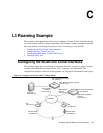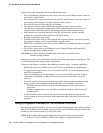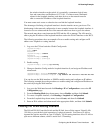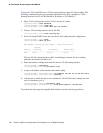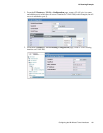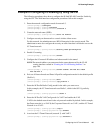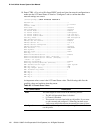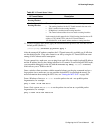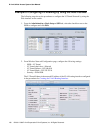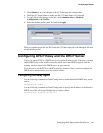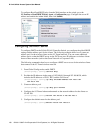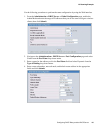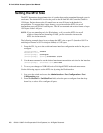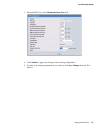
Configuring the L3 Tunnel Network 195
L3 Roaming Example
11. From Privileged EXEC mode, apply the modified default profile to the APs that use the
default profile (Profile 1).
(switch-prompt)#wireless ap profile apply 1
After the managed AP updates complete, the L3 Tunnel network is available on all APs that
use the default profile. Users who connect to an AP by using the L3 Tunnel SSID can roam
among all APs without traffic interruption.
To test connectivity, make sure you can ping from each AP to the switch loopback IP address
and the IP address used by the routing interface for L3 tunnels. From Privileged EXEC mode,
you can enable debugging on the AP with the
wireless ap debug <macaddr> command,
which allows you to Telnet to the AP.
Once a wireless client associates with the tunneled subnet, use the ping command and set a
large packet size to make sure you can send the desired MTU size through the tunnel. For
more information about setting the MTU size, see “Setting the MTU Size” on page 200.
From a Windows client, use
-l <size> to set the packet size and -f to prohibit packet
fragmentation, for example:
ping -l 1542 -f 192.168.60.15
From a Unix system, use -s <size> to set the packet size and -M do to prohibit packet
fragmentation, for example:
ping -s 1542 -M do 192.168.60.15
Not Configured -
Routing Disabled
Routing is disabled on the routing interface.
Not Configured - No
Routing Interface
The status might show this value for one of the following reasons:
• The routing interface for the L3 Tunnel network does not exist.
• IPv6 is enabled on the routing interface.
• IP Multicast is enabled on the routing interface.
• The Tunnel subnet address does not match a routing interface.
In the example in this appendix, the VLAN routing interface has an IP
address of 192.168.60.15/24, and the L3 Tunnel Subnet is
192.168.60.0/24, so the tunnel subnet matches a routing interface.
Table 63. L3 Tunnel Status Values
L3 Tunnel Status Description



